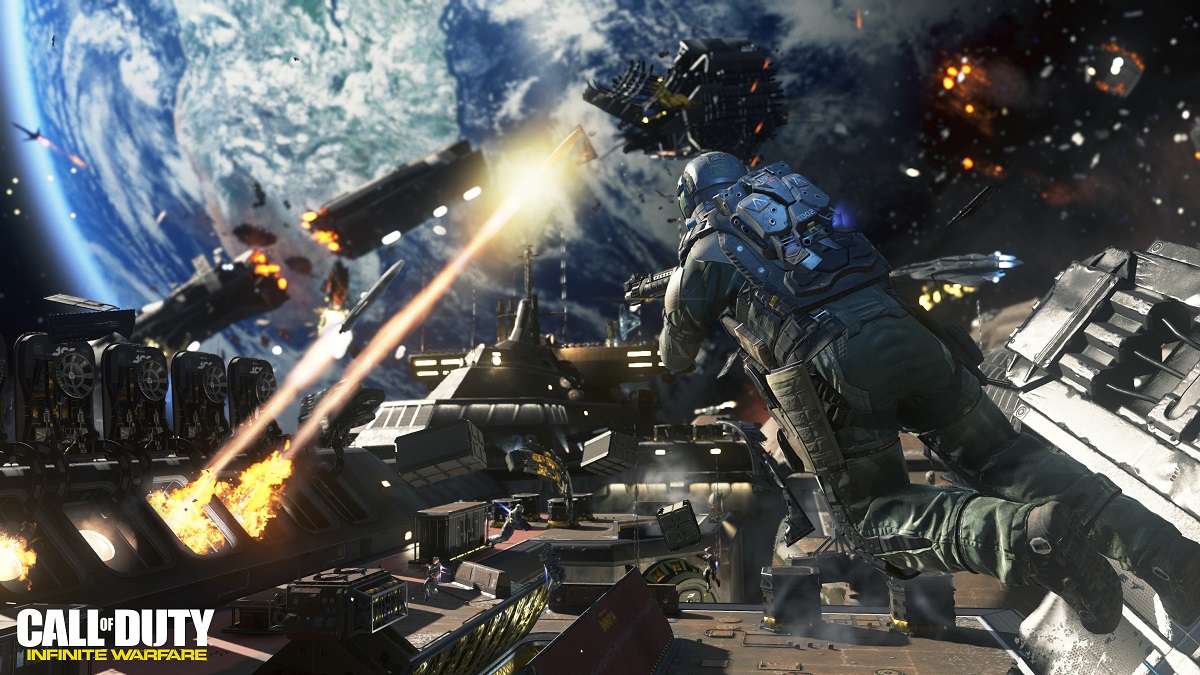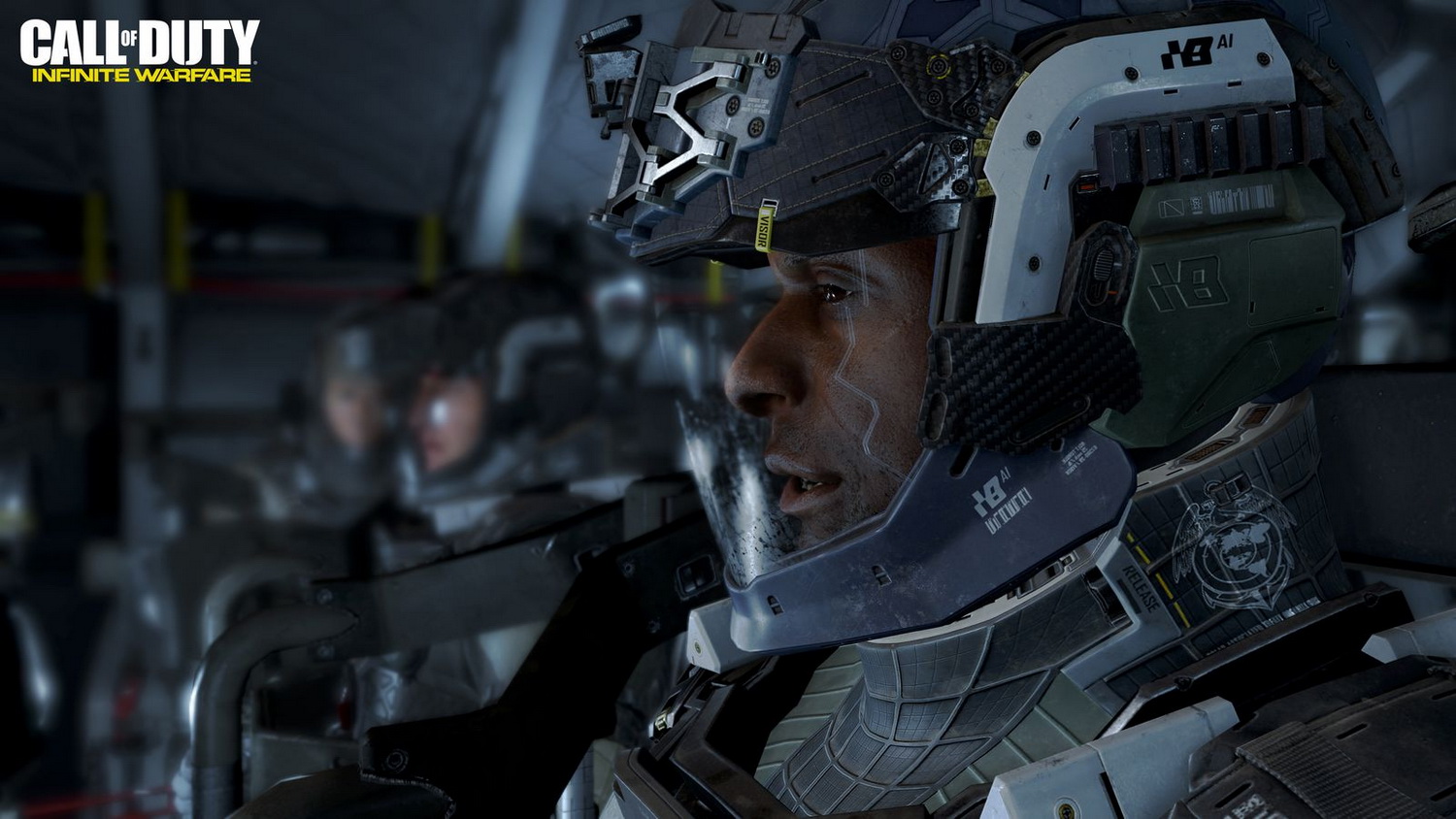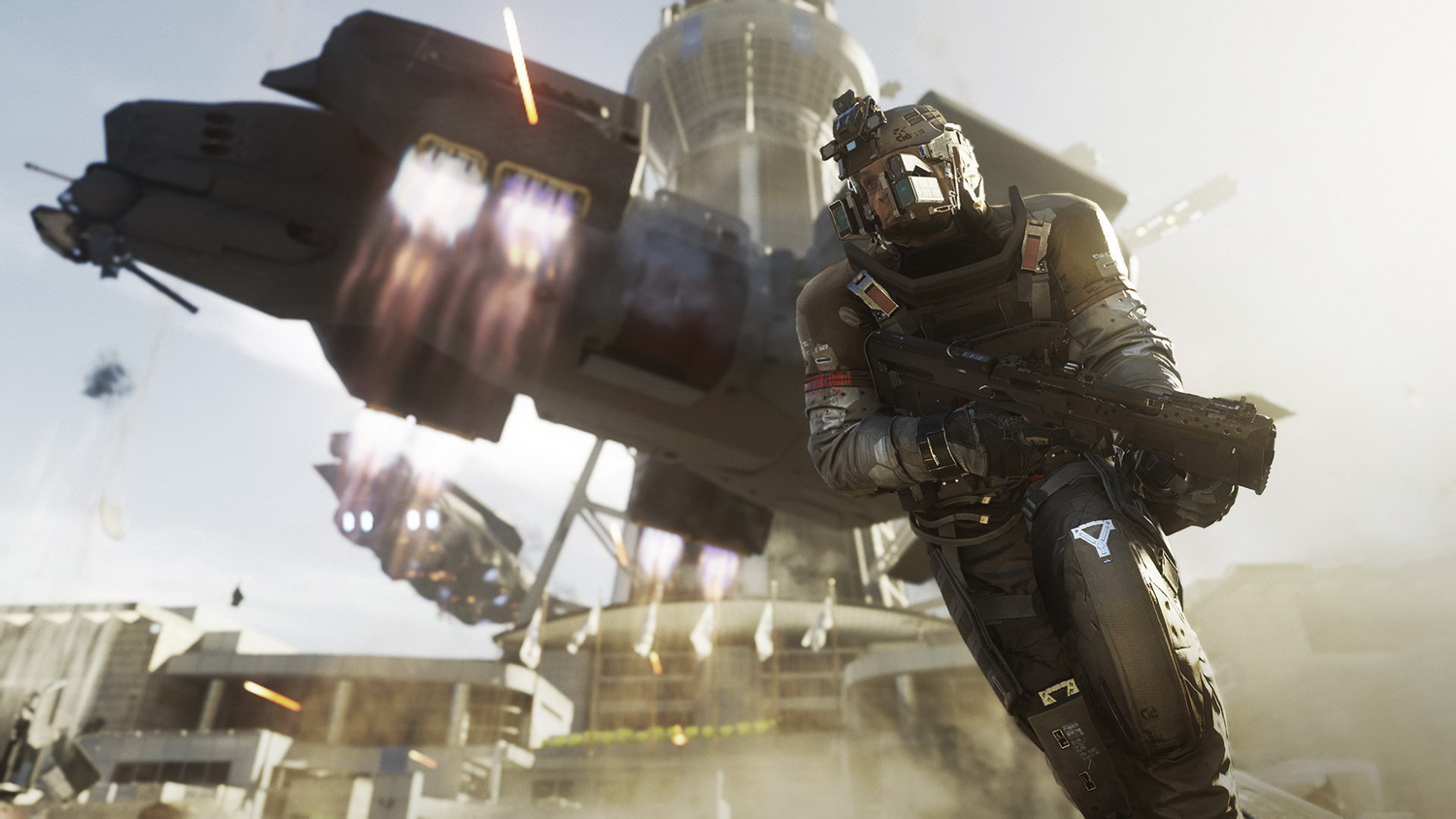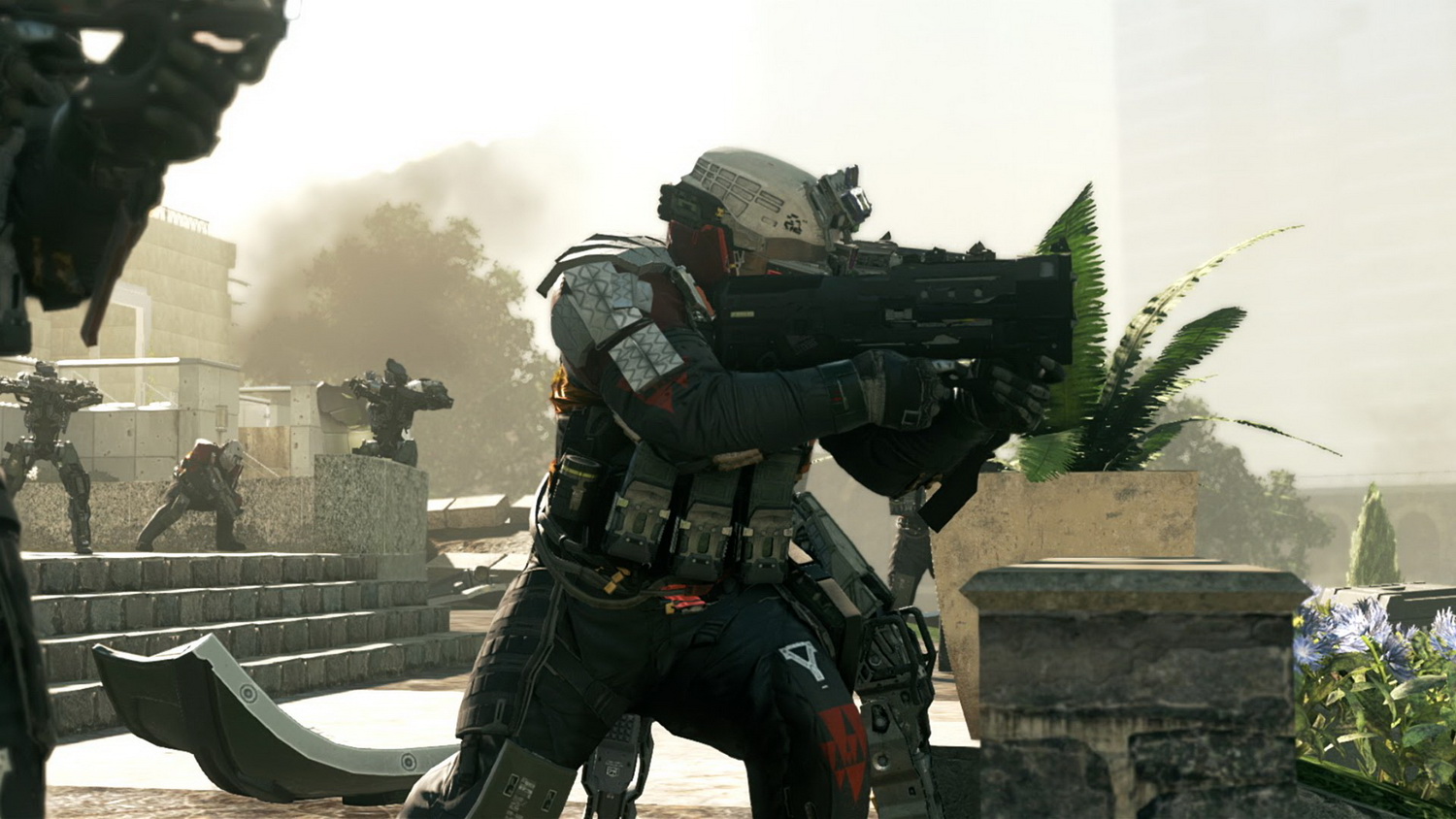If there’s a moment that defined the original Call of Duty, it was that game’s version of the Battle of Stalingrad.
Players dash through machine-gun fire as explosions rock the battlefield, dodge strafing fighter planes, and push ever forward into the destroyed city completely overrun by Nazi forces. It’s an amazing moment on the gaming landscape, and defined what Call of Duty would be for the rest of the franchise’s life. Now pushing 13 years old, Call of Duty has come a long way from that first huge, intense single-player mission.
But despite the fact that this year’s Call of Duty: Infinite Warfare is set seemingly far in the future, in contrast to the original’s World War II, the hands-off demo shown at E3 2016 last week carried that same familiar Stalingrad feeling. The field might have been covered in robotic soldiers, and the air support might have been provided by hovering, futuristic spaceships, but the magnitude and intensity of developer Infinity Ward’s latest entry into the series matched that of some of its classic gaming moments. And it’s that feeling that might make Infinite Warfare stand out among at least the last few entries into this long-running franchise.
Fighting on the final frontier
At E3, Infinity Ward and publisher Activision set the tone for Infinite Warfare with a hands-off demo session. Like the last three or so Call of Duty games, this one takes place in the future, where new technology is changing how war is waged. It’s far enough in the future, in fact, that the battleground now covers the entire solar system, and the game’s conflict isn’t between nations, but between the forces of Earth and her colonies in space. It looks and sounds a lot like something alluded to in a Philip K. Dick novel.
Infinity Ward showed two levels at E3 — one taking place on the ground in Geneva, Switzerland, during a surprise attack by the Settlement Defense Front, and the other happening in lunar orbit in the vacuum of space. The Geneva mission was the one that reminded of Stalingrad, albeit with a Battlestar Galactica twist: It felt like a believable but far-flung version of the future, where soldiers are also pilots and battles are just as vertical as horizontal.

The first level had a squad of soldiers running through Geneva with the player, trying to get to a particular tower that was overrun by SetDef forces. The player blasted through city streets, using a variety of weapons, including a shotgun that automatically targeted the enemies’ vulnerable body parts, or a remote spider drone that would climb on the backs of enemies and vaporize them with a controlled explosion.
The player and their squad busted through embattled bars and restaurants, saving civilians from encroaching SetDef forces, before heading forward to the hill on which the tower was located. From that point there began a massive charge of soldiers, with air support cutting through entrenched enemy forces. A crashing spaceship hit a staircase up the hill as the player approached, the cockpit shearing off and hurtling past. It was a desperate charge with explosions wracking the field and bullets slamming through the air.
At E3, the magnitude and intensity of developer Infinity Ward’s latest Call of Duty matched that of some of the series’ classic gaming moments.
Though the scene is littered with futuristic elements, from the tower you’re charging toward, to the spaceship-jets that swoop in to blast away at bad guys, to the armor of the soldiers who are backed up by robotic counterparts, something about it works on a sensory level. It might be the thing Infinity Ward developers kept repeating during an interview with Digital Trends: The developer has worked to “ground” this futuristic setting, and make it feel tangible to players.
It did that by trying to use as much real technology, or at least technology extrapolated from real technology, as possible — so that to players, this futuristic setting feels believable.
“It’s one of the reasons why, everywhere we go, we have these really great people in khaki-looking fatigues,” Infinite Warfare Project Director Chad Findley explained. “They’re using weapons that are ballistic, that fire like real weapons do. We always want to make sure we keep the player grounded while we take them to these fantastic locations. [In one mission], you’re on the Saturn moon Titan, wading through methane lakes. We wanted to make sure while you’re doing that you’ve got a little groundedness to make sure you’re like, ‘Oh yeah, this is still Call of Duty.’”
The demo ends with the player calling in and then hopping aboard a Jackal, what’s essentially a fighter jet that can blast its way into orbit. In one seamless launch, the ship carries players into orbit, where the squad zips off to join a space battle. That’s one of the essential elements of Infinite Warfare, Design Director Jacob Minkoff said — players will be going from ground to orbit, from zero-gravity shootouts to spaceship dogfights, without any load screens or stoppages.
Call of details
The second demo level was a side-mission, one that will be available from the space aircraft carrier that players come to command through the course of Infinite Warfare. That carrier serves as a hub for navigating the solar system and taking on missions. In the demo, players attack an enemy capital ship, first taking part in a fast-paced ship-to-ship battle in their Jackals.
These portions of the game aren’t on rails, like previous vehicle-centric portions of Call of Duty games might have been. Players have full control of their fighters, which look to move the way real spacecraft would, with full motion on x-, y- and z-axes. Again, 2004’s Syfy reboot series Battlestar Galactica comes to mind: with no friction, ships don’t “fly” through space, they move in whatever direction they’re pushed until they’re pushed in another one. That means you can strafe past ships moving laterally or up and down, and spin in circles to totally re-orient yourself as if you were doing an underwater flip in a pool.
Next, the mission leaves the Jackals as players float around in zero-gravity in spacesuits, in order to breach the ship itself. The player uses a grappling hook to snag chunks of degree in order to move around, because again, in a zero-g environment, once you start moving in a certain direction, you don’t stop. Those grapples double as weapons; in the demo, the player snagged enemies to bring them in close, tearing off their helmets to expose the poor souls to the vicious vacuum of space.
Infinity Ward took painstaking steps to make all of this feel like the real deal, Minkoff said. Everything from the aircraft-carrier players command to the weapons they’d use in zero gravity was the result of consultations with agencies working on space tech.
That’s also the reason, Minkoff said, that Infinite Warfare’s space battles include sound — despite there being no sound in a vacuum.
“People are like, ‘There should be no sound in space,’” Minkoff said. “We’ve talked to people who say that actually, you want to be able to use all of your senses for battlefield awareness at all times. So in a situation that’s so foreign to human evolution, like a vacuum, you need to find some way to simulate what so many of years evolution of our senses has given us the ability to process.”
Infinite Warfare seemingly has serious potential to take the Call of Duty franchise to some very new places.
So in Infinite Warfare’s fiction, there’s an extrapolation on current technology. The idea is, lasers microphone arrays on players’ spacesuits measure the vibrations of objects, like spaceships, as they react in the battle to energy moving through space. Then the tech simulates the sounds that would accompany those vibrations. And thus, sound in space.
For Findley, who studied aeronautics and astronautics in the Massachusetts Institute of Technology, the authenticity of Infinite Warfare is pretty important. And so Infinity Ward did plenty of research, on everything from weapons to the layout of the ship players command — on which the team consulted a two-star Admiral. All of it is meant to come together to create that sense of “groundedness” Infinity Ward wants to achieve, building a science fiction setting with as much authenticity as the team can manage.
Ghosts of the past
Infinity Ward last blew up the Call of Duty franchise, launching it to its current prominence, with 2007’s Call of Duty 4: Modern Warfare. Minkoff said the goal with Infinite Warfare is to do the same thing to the series as it stands now, hoping to shake it up and re-energize players with something exciting and new.
“Everyone at IW, I think, just wanted to innovate,” he said. “There was a feeling that, in the same way that IW went from World War II to Modern Warfare, and it was a big leap, and it kind of felt like at the time, ‘Okay, we’ve done World War II — there’s still cool stuff that can be done with World War II, but this studio has done that, what’s the next thing?’ So that moved on to Modern Warfare. Then Ghosts was the end of that cycle for IW, and IW felt that it was time to move on to what the next thing is. One of our goals was to make a change to the franchise that was as big as the jump to Modern Warfare.”
The studio feeling that drive to innovate is probably true, given the ideas Infinity Ward is putting into Infinite Warfare and how long the series has been walking the “modern warfare” ground. But the last game out of the studio, Call of Duty: Ghosts, also looked poised to launch a new sub-franchise of its own, and its single-player campaign even ended with a cliffhanger.
But Ghosts was one of the weaker recent Call of Duty games, reception-wise. Though it shipped $1 billion in copies, its sales underperformed in relationship to Activision’s projections.
Ghosts has gone to the great beyond, but from what Infinity Ward showed at E3, that might be for the best. Heavy on science fiction though it may be, the studio’s demo was huge, explosive, and exciting, and Findley described other cool ideas as well — like a spinning meteorite nearer to the sun than Mercury, where sunlight is deadly and day and night cycles come so quickly that players spend an entire firefight running for cover from the heat.
As different as those locales sound from where the Call of Duty franchise got its start, on Russian beaches and in bombed-out World War II cities, at E3, Infinite Warfare felt true to those classic Call of Duty moments. It might be farther than the series has ever gone, and a great deal stranger, but Infinite Warfare seemingly has serious potential to take the Call of Duty franchise to some very new places.






